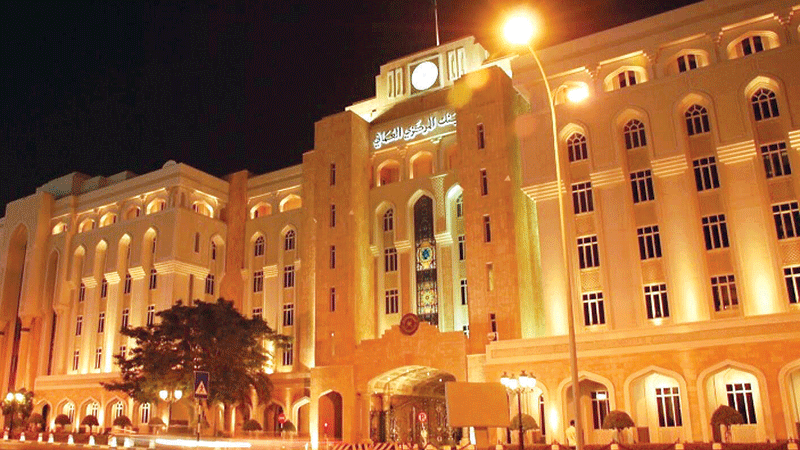

The Central Bank of Oman (CBO) has cautioned commercial banks in the Sultanate that any reluctance to lend amid concerns of loan defaults linked to the ongoing pandemic would only slow the pace of Oman’s economic recovery.
The caveat came in the 2020 Financial Stability Report issued by the regulator recently. It said: “The pandemic-led shock may push up the flow of new non-performing loans (NPLs). Nevertheless, continuity in risk-taking by the financial sector is imperative for bringing the economy back on track.”
It comes as the stock of gross NPLs of the banking sector rose sharply to RO 890 million at the end of 2019, equating to 3.5 per cent of the combined lending portfolio of commercial banks.
The corresponding figure for 2018 was RO 683 million, representing 2.7 per cent of gross loan portfolio for the year.
Net NPLs however amounted to RO 345 million or 1.4 per cent of the net loans at the end of 2019, the apex bank said, noting that the existing loan portfolio of banks was “well-covered against expected credit losses through adequate provisions with a coverage ratio of over 61 per cent”.
The report credited measures adopted earlier by the CBO for increasing the resilience of borrowers to any pandemic-related impacts.
These measures included deferrals of loan instalments and a moratorium on changes in risk classifications for borrowers availing such deferments. Such “regulatory measures were imperative to support viable borrowers facing a temporary liquidity crunch”, the report noted.
Nevertheless, the apex bank urged lenders to be vigilant for “problem loans” obscured from view by the measures.
“Considering that the pandemic may have a long-lasting impact on some borrowers affecting their viability, once these relaxations expire, the non-performing loan portfolio may grow from the current levels.
This underscores the need to carefully monitor the developments of the banks in the period ahead,” it stressed
The apex bank cited in particular the risk of defaults with regard to credit to two key sectors: personal loans to individual, which accounted for the lion’s share (40 per cent) of total credit extended by banks in 2019, followed by the construction sector, which received 11 per cent of the total loan portfolio. While personal loans have less than average NPL ratio of 2.5 per cent, NPLs for the construction sector however reached 7.6 per cent.
“The NPLs of these two sectors together constitute over half of the non-performing portfolio of the banking sector. Banks should remain vigilant of their exposure to the sectors that are closely linked to economic downturns, particularly the construction sector. Going forward, the prevailing challenging operating conditions and reduced expenditure on infrastructure projects may further adversely affect the construction sector,” the report stated.
Personal loans disbursed by commercial banks climbed to RO 10.242 billion in 2019, up from RO 10.006 billion a year earlier. A distant second came the construction sector, which received RO 2.803 billion in credit last year, representing 10.9 per cent of total banking credit of RO 25.830 billion.
Other economic sectors benefiting from banking credit last year were: Services RO 2.193 billion (8.5 per cent), manufacturing RO 2.173 billion (8.4 per cent), electricity – gas – water RO 1.302 billion, financial services RO 1.244 billion, transport and communications RO 1.240 billion, mining and quarrying RO 1.113 billion, and wholesale and retail trade RO 1.075 billion.
CONRAD PRABHU
@conradprabhu
Oman Observer is now on the WhatsApp channel. Click here



